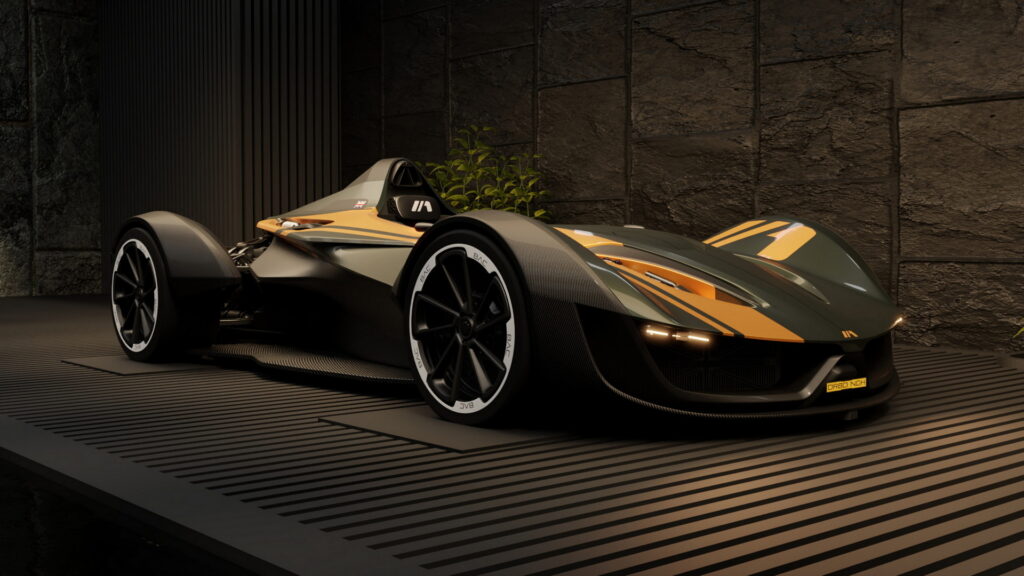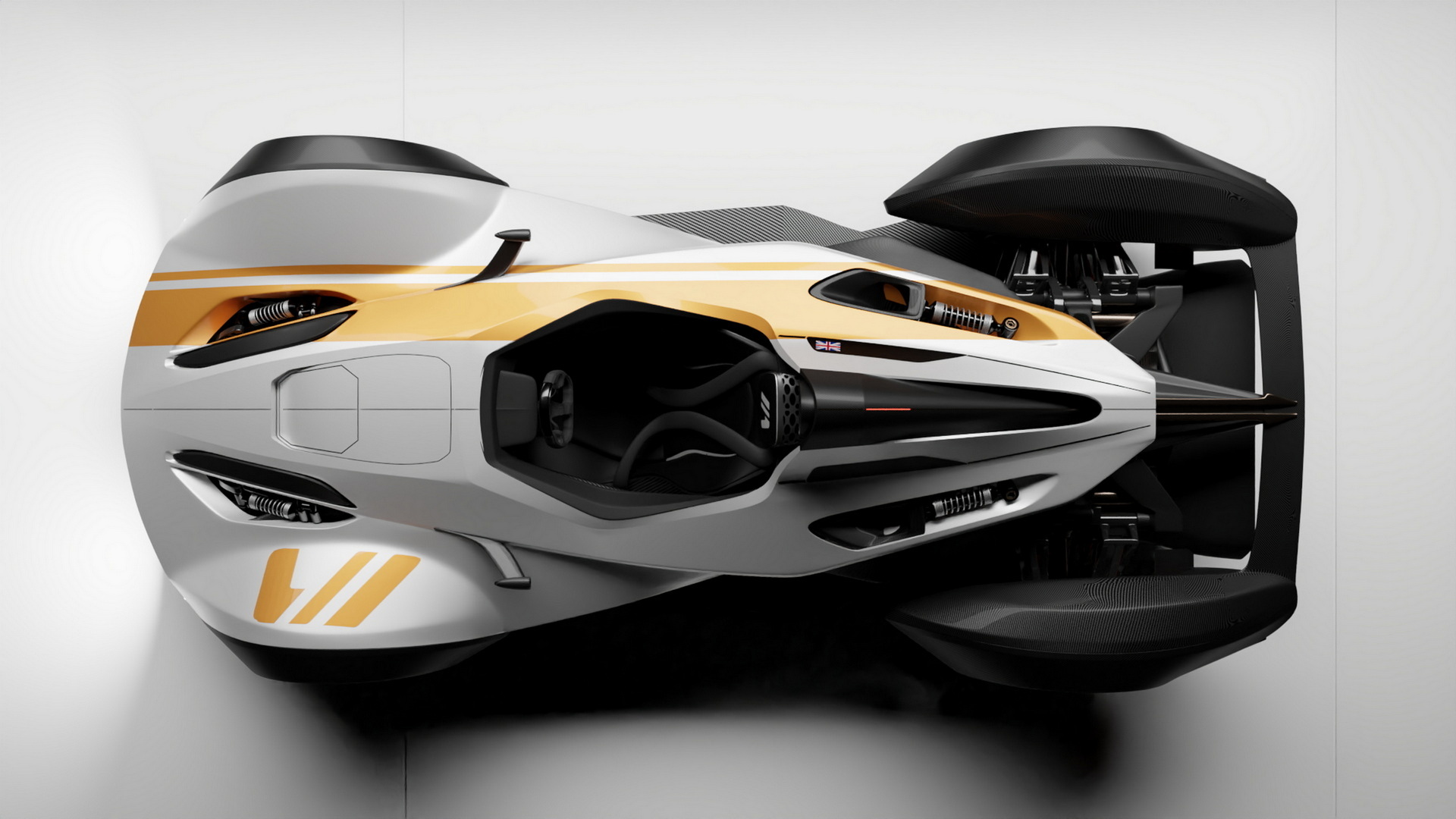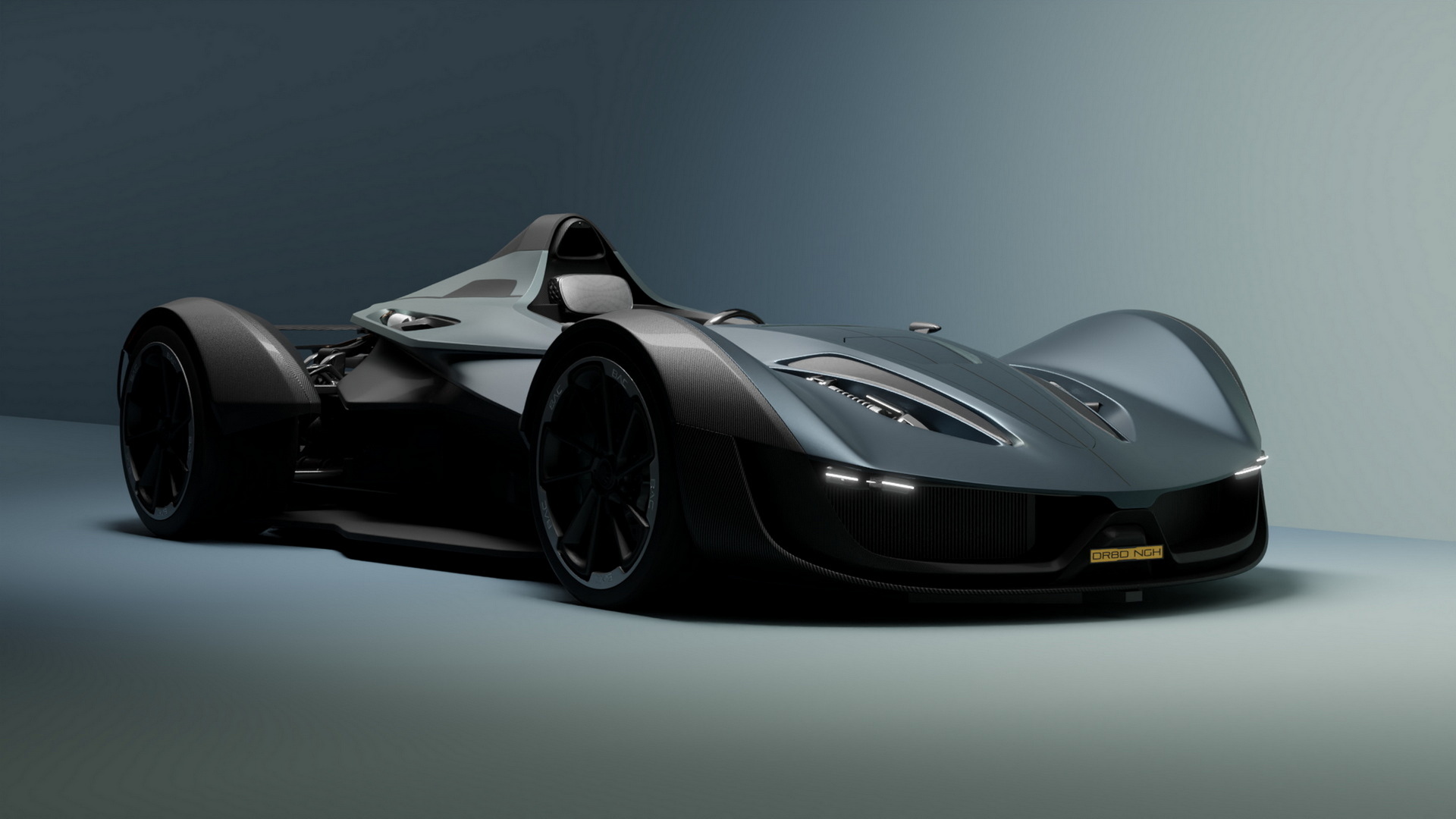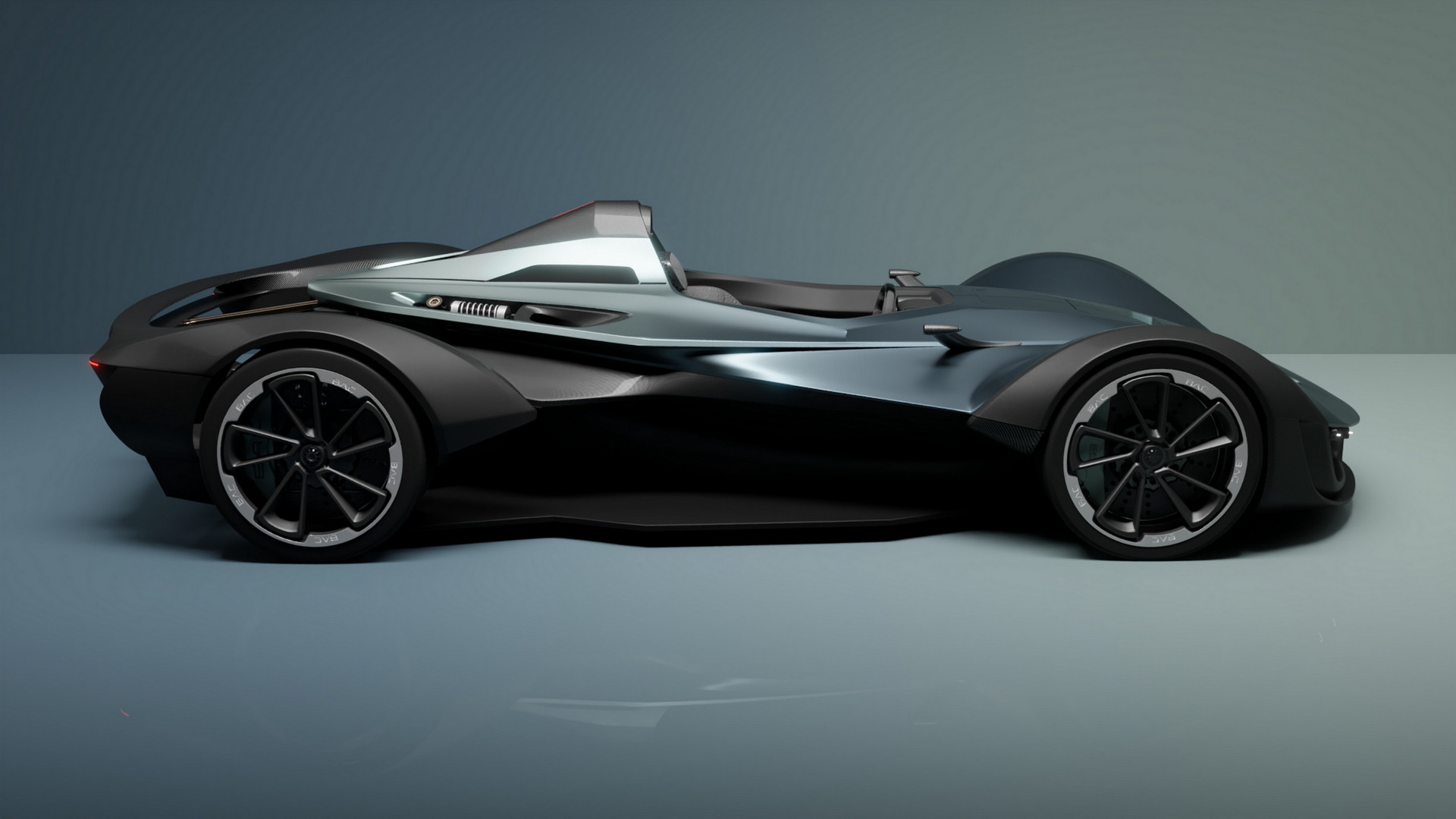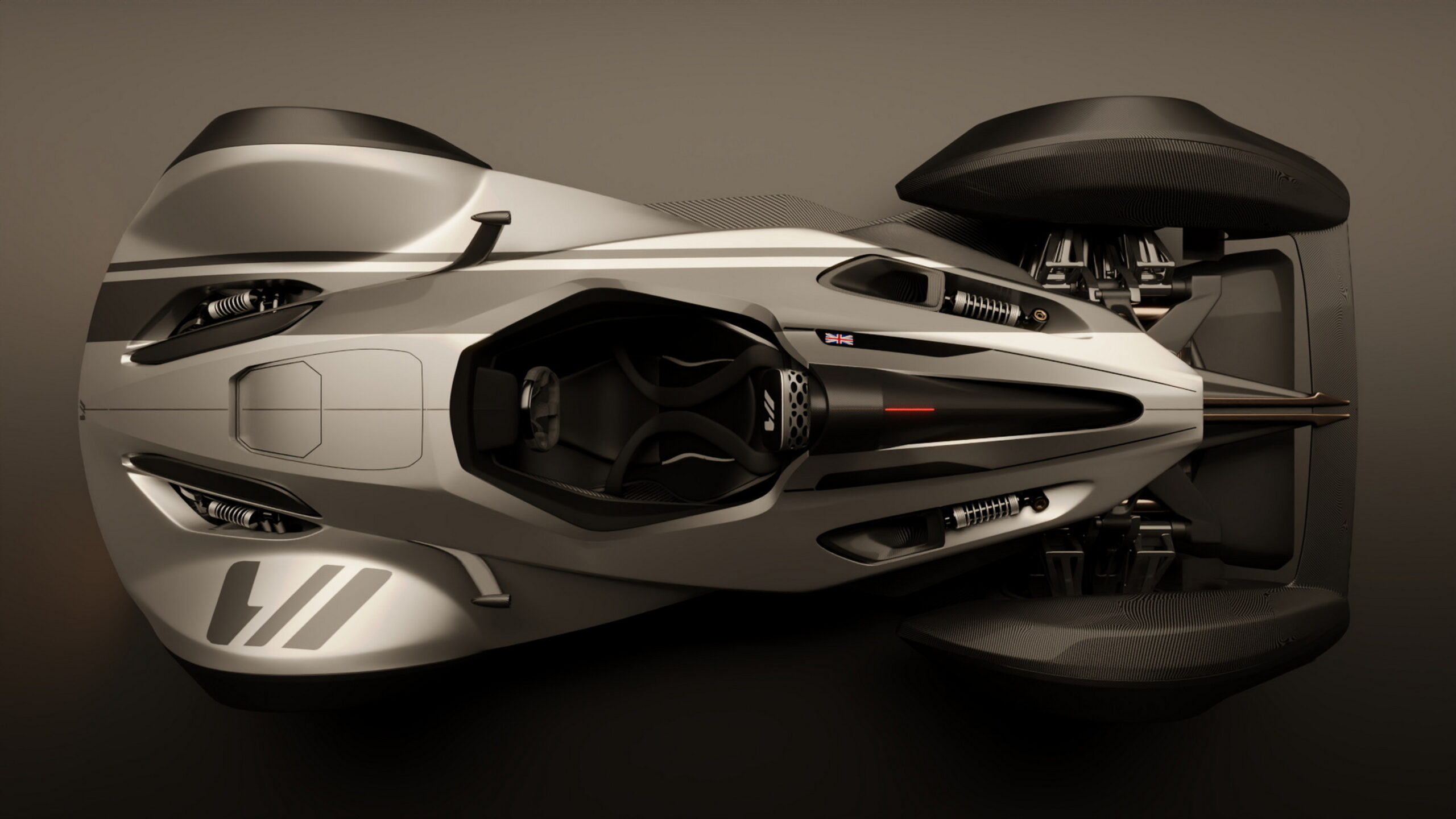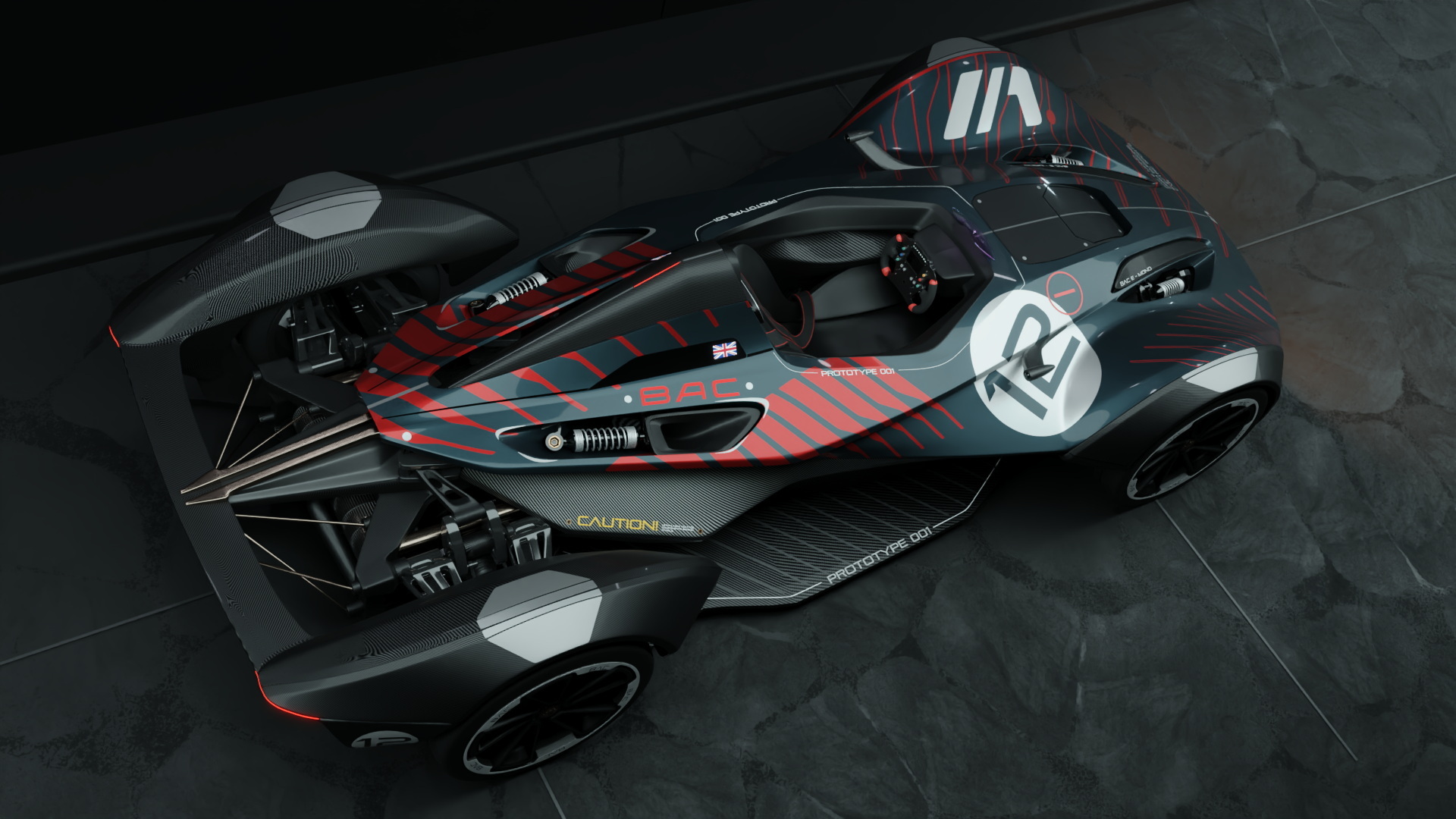This story contains independent illustrations that are not related to nor endorsed by BAC.
Last year, BAC announced the hydrogen-powered e-Mono concept, as a feasibility study for its zero-emission future. The single-seater was previewed in official sketches, looking very similar to the ICE-powered Mono, but independent designer Maitreya Dhanak created his own version of it in the digital world, looking a tad more aggressive.
Since its original debut in 2011, all variants of the BAC Mono retain the signature roofless single-seater layout, the semi-exposed mechanical components, and plenty of aeronautical and motorsport references in the exterior design. Dhanak didn’t deviate from that rule, with his concept being instantly recognizable as a BAC. Still, he changed a few things, proposing an alternative future for the track-focused supercar.
Read: BAC Presents Sci-Fi Inspired 150th Mono Special
The highlight is the relocated LED headlights, which are now mounted lower, combined with a cleaner design for the front intakes. While this treatment looks impressive on paper, we are not sure if it would comply with laws about road-legal vehicles since headlights need to be at a certain distance from the ground. This is probably why BAC opted for fender-mounted headlights in the first place. The signature slits for the front suspension are retained, with a similar design for the exposed rear springs. Other cool features include the more pronounced front and rear fenders, and the mirror-replacing cameras.
From the top view, the changes in the silhouette are more visible, with the design student opting for a simpler drop-shaped form for the main body. He has deleted the air intake pod, and minimized the side air intakes since there is no combustion engine behind the single-seater cabin. However, the F1-style intake above the headrest is retained, as an important feature of the car. At the back, he opted for ultra-slip LED taillights, although we must admit that the lighting signature of the original BAC e-Mono already looks great.
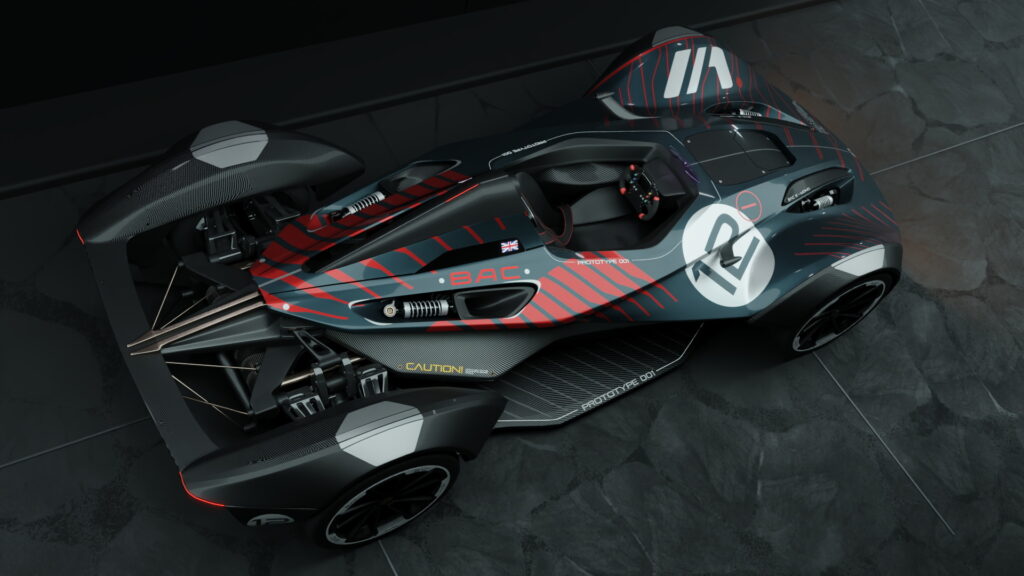
Unlike Maitreya Dhanak who revealed his design with plenty of different liveries, the low-volume British automaker has yet to fully unveil the BAC e-Mono concept. We do however have the official specifications of the hydrogen-powered supercar. The FCEV powertrain produces a combined 371 hp (277 kW / 377 PS), featuring all-wheel-drive. As a result, the supercar can accelerate from 0-100 km/h (0-62 mph) in 2.2 seconds and has a top speed of 266 km/h (165 mph). According to BAC, the e-Mono proved to be faster than the ICE-powered Mono R around Silverstone in digital simulation tests. What we don’t know is whether the design student envisioned his e-Mono as an FCEV or as a BEV.
Do you like this alternative BAC e-Mono more than the original? Thankfully BAC recently announced plans of introducing new models and entering new markets this year so there is a lot to expect from the British company.




